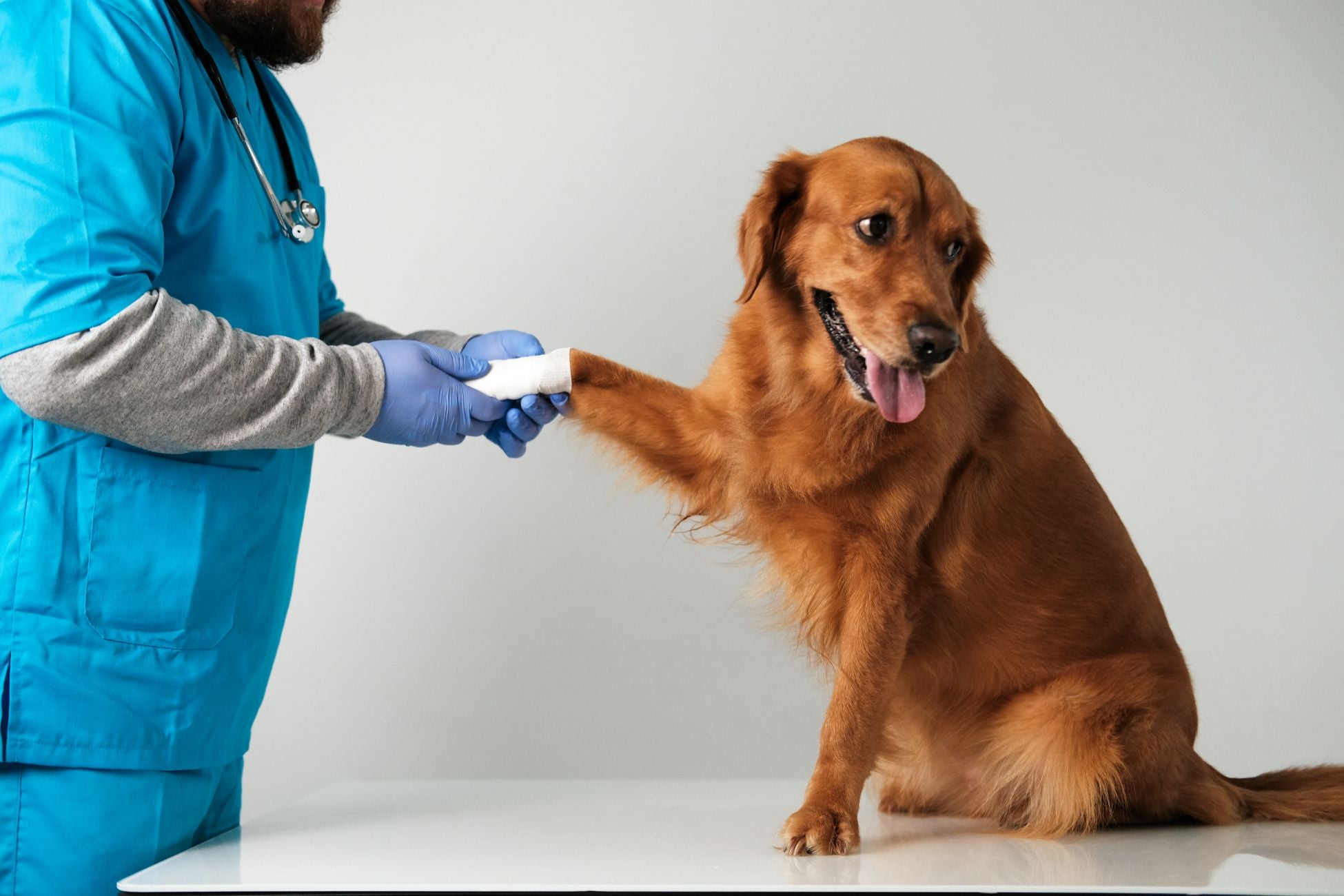
- by Dr.Thilo Senst
How to Stop a Dog from Licking Its Wound: Top Tips & Solutions
- by Dr.Thilo Senst
How to Prevent a Dog from Licking Its Wound: Best Solutions
Dogs have a natural instinct to lick their wounds, and while this behaviour can sometimes help remove dirt, it often causes more harm than good. Excessive licking disrupts the healing process and can introduce bacteria, leading to infections or reopening of wounds. In this article, we’ll discuss the best ways to prevent your dog from licking its wound, helping ensure a safer and faster recovery.
According to a UK survey by the PDSA (People’s Dispensary for Sick Animals), 52% of dog owners have faced issues with their dogs licking wounds, often leading to prolonged healing. Understanding how to manage this behaviour effectively can make a substantial difference in a dog’s recovery process.
Dogs lick their wounds instinctively, a behaviour rooted in their ancestors’ survival strategies. In the wild, licking a wound would help remove dirt and blood, which may deter predators. However, in a controlled home environment, this behaviour is more detrimental than beneficial.
Licking releases endorphins, a natural painkiller, which temporarily soothes the wound area. However, continuous licking can cause inflammation, making the wound more painful over time.
If a dog is left with little to do, they may start licking their wounds as a way to cope with boredom or anxiety. This is especially common in dogs with separation anxiety or those recovering from surgery.
The classic cone, or E-collar, is a staple for wound protection. E-collars create a physical barrier that prevents your dog from reaching the wound site.
An alternative to the hard plastic cone, inflatable collars are more comfortable and allow dogs to move freely without obstructing their view.
A simple but effective solution, bandaging covers the wound, preventing direct contact. Ensure the bandage is secure but not too tight to allow proper circulation.
Anti-lick strips and bandages come with a bitter taste that deters licking. This taste can discourage dogs from attempting to remove or lick the wound dressing.
Bitter sprays, such as Dr. Senst Antiseptic Spray For Dogs Wounds, are formulated with a taste that most dogs find unpleasant. When applied around the wound, these sprays discourage licking while offering antiseptic properties that protect against infection.
Providing mental stimulation through toys or chews can distract your dog from its wound. Puzzle toys, chewable treats, and interactive toys are excellent options to keep your dog’s focus away from licking.
Ensuring your dog receives ample physical activity can help reduce boredom and anxiety, two primary triggers for wound licking. Regular walks, short games, or gentle playtime sessions can aid in relaxing your dog and promoting overall well-being.
Consider a person with a broken arm – they wear a cast to allow the bone to heal without disturbance. Preventing a dog from licking its wound serves the same purpose; it protects the area, allowing the body to repair itself without interference.
| Solution | Best For | Pros | Cons |
|---|---|---|---|
| E-Collars | All wound types | Highly effective, widely used | Can be uncomfortable |
| Inflatable Collars | Minor wounds | More comfortable, allows movement | Less effective on limbs |
| Bandaging | Small to moderate wounds | Easy to apply, affordable | Needs frequent changing |
| Anti-Lick Bandages | Moderate to severe wounds | Prevents licking with taste deterrent | Dogs may adapt to taste |
Generally, you should prevent licking until the wound has healed completely, which can range from several days to weeks, depending on the wound's severity.
Yes, using natural bitter-tasting sprays can deter licking. However, ensure any natural solution is safe for canine use and doesn’t irritate the wound.
If your dog is determined to remove the cone, try using an inflatable collar or adding a bandage. You may also consider a more comfortable, padded E-collar.
It’s generally recommended to clean a wound 1-2 times daily. Use a veterinarian-approved wound cleaner and ensure the wound area is dry after cleaning.
For effective wound care and to prevent licking, consider these products from the Dr. Senst range:
By following these tips and using quality products like Dr. Senst’s range, you can give your dog the best chance of a smooth and speedy recovery from wounds.
![]()
Enter your details & download our comprehensive 50+ page printable Dr. Senst Pet Care Planner completley FREE! - keep track of all your pet’s needs, from medical history and training to vet visits, grooming, diet, and more!










Share:
Top Vet-Recommended Cat Eye Cleaners for Clear, Healthy Eyes
Essential Guide to Puppy Temperament Testing and How to Do It Right